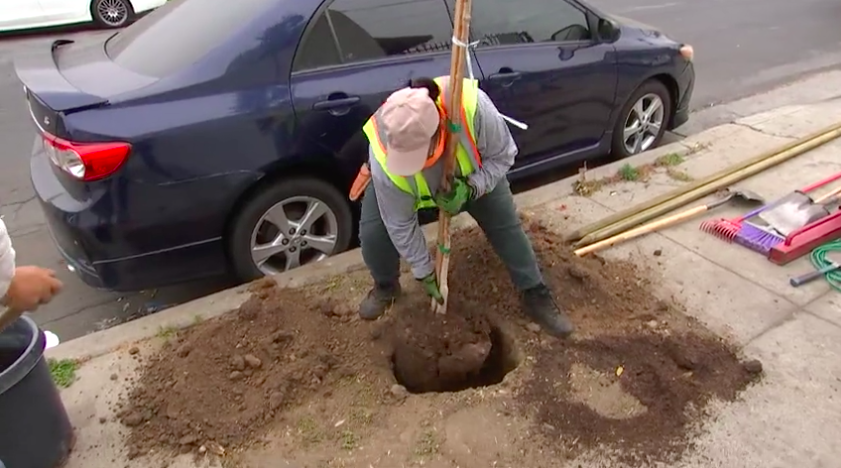Trees provide shade, cleaner air, and in many areas of Los Angeles, they are woefully missing, making some places hotter and more unbearable.
The lack of trees causes urban heat islands, which are areas largely missing greenery and in which unshaded roads and buildings gain heat during the day and radiate it into the surrounding air, making them several degrees hotter than surrounding areas, according to the National Integrated Heat Health Information System.
In Los Angeles, nearly 3.3 million people live in areas that are at least 8 degrees higher than surrounding areas, according to an analysis by the nonprofit Climate Central news organization, which reports on climate science.
“In the heat wave, I always wish that we were further along, that we had made more progress, but we're making some significant changes,” Los Angeles City Forest Officer Rachel Malarich said.
Get top local stories in Southern California delivered to you every morning. >Sign up for NBC LA's News Headlines newsletter.
The city’s first-ever forest officer, Malarich said they now have a better idea of what our urban forest looks like, taking the first citywide inventory in nearly three decades.
“We are getting close to being done. The park inventory was finished in March 2021. The street tree inventory is supposed to be done by the end of this year,” she said.
She says knowing where trees are located, their health and where more are needed help them plan where to plant next.
“So instead of just saying we're going to deploy and plant available locations, we're thinking are the trees that we're going to plant there ones where the community needs the most, where they've said, this is a high priority corridor, and do we have enough space to plant the tree that's going to grow large enough at the end of the day to really provide significant shade?” Malarich said.
The NBC4 I-Team first met Malarich a couple of years back, on a short walk from Koreatown to Hancock Park, where you can see the difference between a tree “desert” and lush landscapes.
Some call the lack of trees in local neighborhoods a deliberate practice, decades in the making. That’s not lost on Malarich then and now, especially with increasing temperatures and heat waves.
“I'm feeling impatient. I know our communities are sometimes like, 'Where is the shade?' And unfortunately, even after we plant trees, it takes time for them to grow into place. There's no “insta-shade”,” she said.
Tree maintenance has fallen behind, now happening every 20 years, according to a recent audit by the Los Angeles City Controller’s office.
The audit also shows the city did not meet a goal set by then-Los Angeles Mayor Eric Garcetti in the city’s “Green New Deal” to plant 90,000 trees citywide by 2021.
At last count, Malarich says the city has planted close to 80,000 trees, and there are efforts to shorten the time between checking on city trees.
“We want to get to a five to seven-year cycle. We need funding and staff positions to do that. And I can share that the mayor and council have added new crews over the past several years, incrementally increasing some crews, but we're having a hard time sometimes hiring those positions,” she said.
Malarich said the city and county of Los Angeles are coming together, working on separate urban forest management plans with similar priorities in place to reduce redundancy.
A goal remains to increase the tree canopy in Los Angeles by 2028, when the Olympics come to town, in areas of least shade, often LA’s hottest, low-income communities.
“I'm hoping by 2025 that we have an adopted plan, but I haven't even had a chance to hear the community voices yet. I have a lot of thoughts on policy, but I want to make sure that they're aligning with the priorities of our communities,” Malarich said.
Look out for more community forums at the Office of Forest Management page for Los Angeles.



